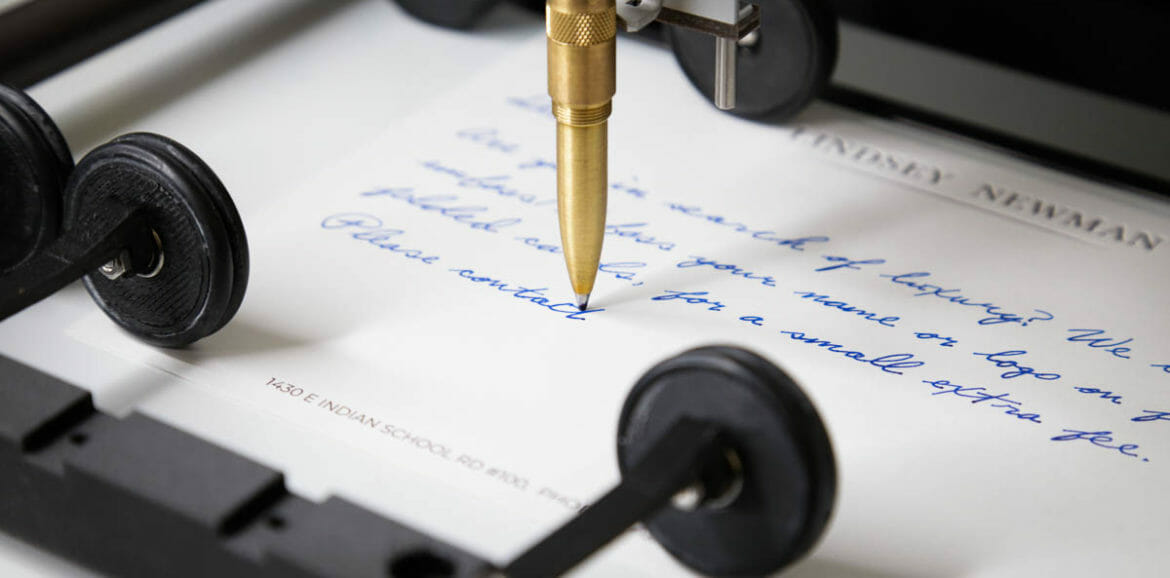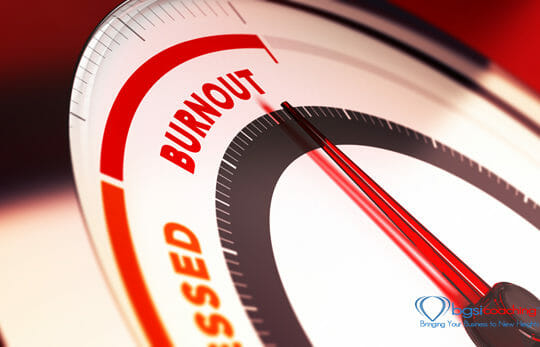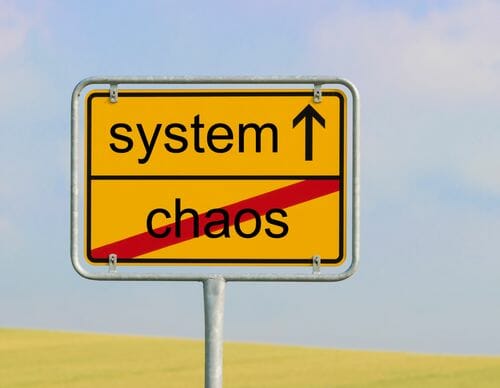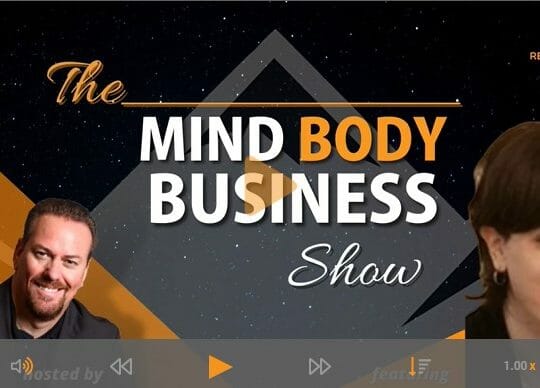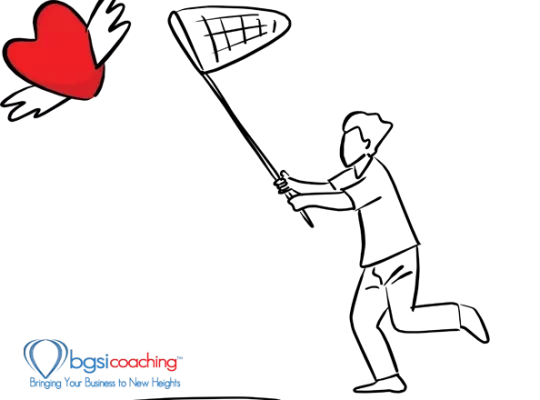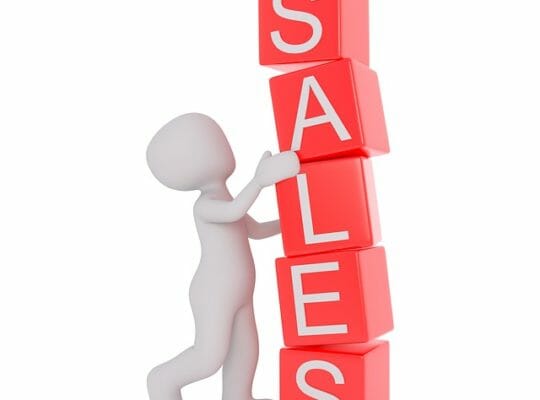One of the things that seems to have been lost to time is a “thank you” note from people. It used to be proper manners to send a thank you card to people when they hosted you. It used to be the norm to send a thank you note to someone you met with. But today, most of the thank you’s seem to either be in the form of an email or text message, if at all. Rarely do these thank you’s come in the mail.
My guest on this show is on a mission to change that one card or note at a time. With his robot-written cards using actual handwriting, not traditional computer fonts, you have a chance to leave an impression on the people you meet and do business with, all for a very nominal investment. And with that nominal investment, you’ll be earning a lot of value – perceived and real – in the eyes of the recipients!
Listen in as Jennifer and David Wachs of Handwrytten talk about gratitude and ways a simple gesture can lend itself to tremendous returns down the road.
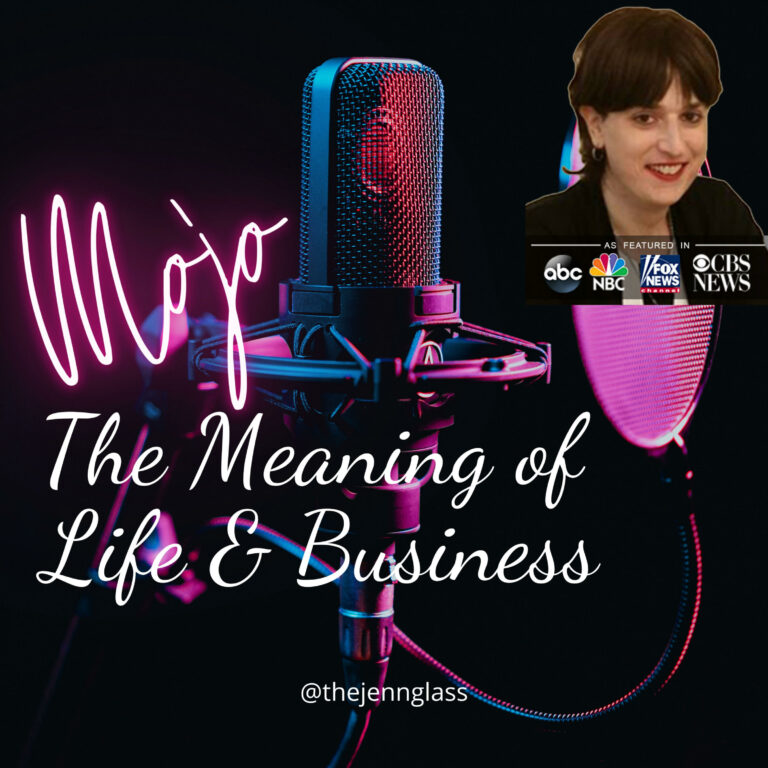
Life & business intersect in many places. After all, we cannot have a business without looking at the human component of business.
This podcast with Jennifer R Glass, CEO of Business Growth Strategies International & BGSICoaching.com is all about the meaning of life and business & the interesting ways they intersect. The show is for entrepreneurs and aspiring entrepreneurs on the search for what makes people successful and how to get there themselves.
Listen in as Jennifer & her guests dive deep into what makes people tick & how they make their businesses work for the betterment of others.
One of the things that seems to have been lost to time is a “thank you” note from people. It used to be proper manners to send a thank you card to people when they hosted you. It used to be the norm to send a thank you note to someone you met with. But today, most of the thank you’s seem to either be in the form of an email or text message, if at all. Rarely do these thank you’s come in the mail.
My guest on this show is on a mission to change that one card or note at a time. With his robot-written cards using actual handwriting, not traditional computer fonts, you have a chance to leave an impression on the people you meet and do business with, all for a very nominal investment. And with that nominal investment, you’ll be earning a lot of value – perceived and real – in the eyes of the recipients!
Listen in as Jennifer and David Wachs of Handwrytten talk about gratitude and ways a simple gesture can lend itself to tremendous returns down the road.
About David: David’s latest venture, Handwrytten, provides scalable, robotic solutions that write your notes in pen. Used by businesses in all industries, Handwrytten changes the way brands and people connect. Prior to Handwrytten, David founded Cellit, a leading mobile marketing platform. With clients including Abercrombie and Fitch, Walmart and more, Cellit was sold in January of 2012. Both Handwrytten and Cellit were on Inc. Magazine’s Inc 500 list of fastest growing companies. David is a speaker on marketing technology, has been featured in the Washington Post and Wall Street Journal, and is a contributor to Inc. Magazine.
Connect with David on LinkedIn, Facebook, Twitter, or on the web at handwrytten.com
And when you go to https://www.handwrytten.com today and use promo code podcast you can get $20 in free credits to try out the system and send a few cards to those you’re trying to thank or impress today!
#gratitude #thankyou #thankyoucards #thankyounotes #business #buildingvalue #entrepreneur #marketing
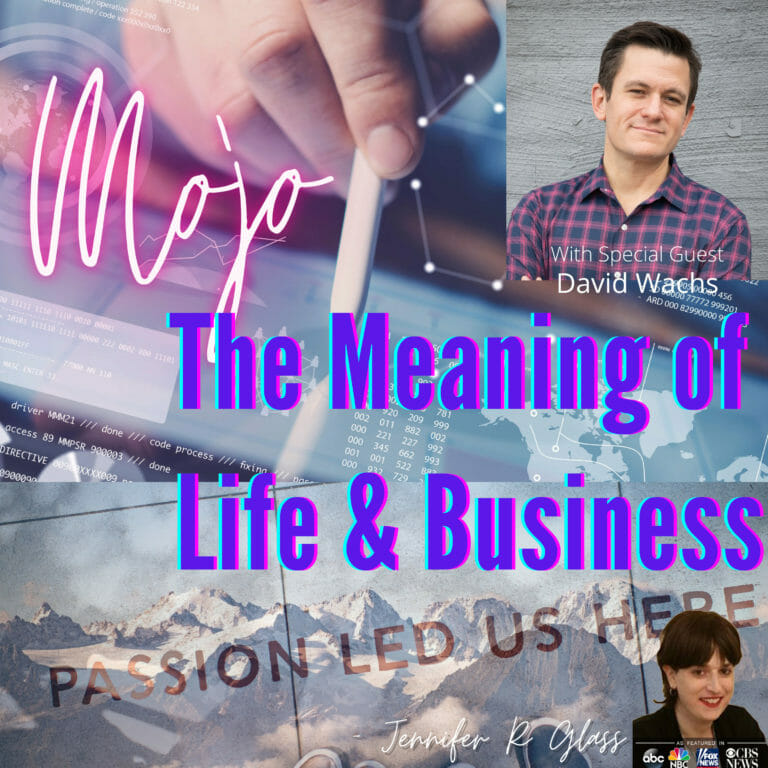
Transcript (auto-generated; may contain errors):
Hello and welcome to another episode of “MOJO: The Meaning of Life & Business.”
On today’s program, we’re going to be talking about gratitude and the power of Handwrytten notes.
A lot of times is when people are in the sales profession, especially one of the things that a lot of salespeople forget about is thanking their clients for business. Businesses, as a rule, need to really ensure that what they’re doing in their business is going to be making sense for their customers to continue coming back. And one of the best ways that people have for that is by sending notes and being grateful for customer’s business.
But before I bring on my guest, let me tell you a little bit about David Wachs, who is our special guest today. So David’s latest venture, Handwrytten that’s with a “y” provides scalable robotic solutions that write your notes and pen. It’s used by businesses in all industries and Handwrytten changes the way brands and people connect. Prior to Handwrytten, David founded Cellit, a leading mobile marketing platform with clients including Abercrombie and Fitch, Walmart, and more. Cellit was sold in January of 2012. Both Handwrytten and Cellit were on Inc. Magazines Inc 500 list of fastest growing companies.
David is a speaker on marketing technology. He has been featured in The Washington Post and Wall Street Journal and is a contributor to Inc. magazine.
David, thank you so much for being on the program today.
Thank you so much, Jennifer, for having me.
Absolutely. So, David, there’s so much that you’ve been through before. We’ll get into the topic of gratitude and notes and everything. Can you give me a little bit of an idea what your journey has been? I mean, we talked about you first founding Cellit and then moving over to Handwrytten. And after Cellit was sold. But what did you do? How did you get there? And what drives you?
I’ve always wanted to run my own business. When I was a little kid, of course, I did the lemonade stand, but then I would often take the red wagon of my older brother. It was like just a radio flyer wagon, and I’d fill it up with whatever I could find to sell. Usually it was candy from Costco or something like that and walk up and down the street as a five year old trying to sell it. Things were simpler back then. And then when I didn’t have any candy, I grabbed the first aid kit, walked door to door and said knocked on doors again, five years old, and people would answer and they’d look down to find me and they’d say, is there an emergency going on? And they’d say, no. And I’d say, okay, I’ll try back later. And that’s kind of the beginning of my business.
That is clear.
Yeah. So it’s premium concierge health care from a five year old who wouldn’t want that? So then my first business after that or my first real business was in high school. I built computers for a local computer company. Back then, Dell wasn’t really a thing yet. And you’d buy the parts and you build them yourself. And I would buy the parts and build the computers and sell them. It was a company called Macrologic Solutions. And I really, honestly started it just as kind of something to do and something that would look good on the College resume. And then it grew so big, it was a problem because I didn’t want to leave customers without support when I went off to school. When I did go off to school, I did a business and engineering program. And the engineering part, I was always into computers, but I chose computer science because I thought, Gee, I’m going to start a business one day. And when I do, it’s a lot easier to start a software company than a hardware company, much less capital expenditure. So that’s why I became a computer scientist computer science engineer from very young through College.
I always thought, I’m going to start a business. And then when I came out of College, I had a lot of debt, and this was go, go 2000. So a lot of companies were just throwing a lot of money at kids, trying to lure them away to help them with their.com or whatever. And I ended up going to a consulting firm that was helping large businesses Start.com within them. And I did this again because I thought, Gee, one day I’m going to start my own.com. So what a better way than to do it on somebody else’s dime a few times. So again, this is right before the bubble burst. So the bubble burst. But Luckily I was spared. My consulting firm treated me quite well, but I got bored. Turned out working with industrial flooring companies, industrial flooring care companies, to try to come up with the.com wasn’t really that sexy. So then I went into venture capital. Yeah, I kind of moved around. I did investment banking, and then I actually did venture capital. And I interviewed with a company out in San Diego, and I turned down the job the first time because they were weird.
And I went to investment banking. And then a year later, they contacted me and said, we wish you’d reconsider. And against my better judgment, I quit the investment banking job and I moved to San Diego to work for this venture capital firm. And the guy was a lunatic. He had my office bugged all sorts of stuff. Everything you could think of weird happened. And the owner used to have his lunches literally brought into his office on a silver platter with one of those silver domes, like it was a cartoon from the 1950s. And he’d have Masseuses go in there and do whatever they do to him. And one day he came into my office screaming at me, blaming a stock transaction that I had nothing to do with on me saying I sold a bunch of stock out of his portfolio and I didn’t have his permission to do that. Anybody in La Jolla, California knows this guy and they know nothing gets past him without his approval. So clearly it was a bunch of baloney. But they fired me, which was good because at the same time, I got evicted from my apartment, which is a whole nother story.
But basically people in San Diego were nuts. And there was this divorce and the people that the guy that I was renting from, it’s a long story, but I got thrown out on my butt. But it was good because at the same time, I got fired for my job. So I no longer have my rental obligation or my job. I didn’t have my rental obligation now that I was out on my butt. So it worked out well. And I didn’t know what to do, though, because I didn’t really have any savings. I used any I was making good money and investment banking and consulting and everything else. But instead of saving any of it, I used it all to pay down my Ivy League education, school debt. So when I came out of San Diego, when I was I don’t even remember how old I was. I guess I was mid 2004. So 27 or so when I came out of San Diego, I moved home to Arizona where my parents were with my head between my legs because I didn’t have any money. I was kind of screwed. So I spoke to my dad.
I said, what should I do? And he said, well, why not use barcodes or blackberries to provide information on houses? And this was before the iPhone. And his idea was basically, you drive by a house, you take a picture with your BlackBerry of the signs bar code in front of the house, and you get information on the property. He was actually kind of ahead of the game because people were doing QR codes later on. But I thought, Gee, what about using text messaging and text info info on the house? And when you do that, we capture your phone number. And when we capture your phone number, we’ll give it to the Realtors so they can follow up with you. So that’s what we started. Or I really started. My dad just gave me the initial half of an idea and started this thing called Sell It. And the first product and Sell It was called House for Sale. And I quickly decided I did not want to be kind of pigeonholed in real estate. So I expanded what seller did to providing solutions for restaurants and bars where if you want to get the happy hour specials at a bar, you text in, you get put on a text list.
Remember, this is again before the iPhone. And you get text messages back saying, hey, come on in for your drinks. And all that stuff. So House for Sale never really did well in real estate. I just didn’t like focusing on Realtors. They’re too hard to deal with, and there was no economies of scale there. But instead I use that platform for Marie Claire magazine that came and knocked on my door. So with Marie Claire, they wanted a system where you could text in for info on products in their magazine. In return, you get back info on the product and they collect the lead that they could then send you a sweepstakes or market to or whatever I’m like, okay, I’ve got this thing. It was called House for Sale. I didn’t tell them that. I said I had to custom build something. And that was my first client, Marie Claire magazine, and then Auto Trader followed and for Rent Media Solutions, which is kind of like an Apartments.com. And then it just kind of grew from there into Abercrombie and Fitch and Toys R US. And before I knew it, we were sending millions of texts today.
So I’ve been kind of going on. But that’s kind of the journey in a nutshell is my journey into entrepreneurship was one where I always wanted to do it, but I needed a Swift kick in the butt to get going. And that kick in the butt was getting fired from an insane lunatic in San Diego and moving home to Arizona with my head between my legs. I held on to sell it from 2004 to 2010. It was actually a rather quick rise. I then sold Sell It to a marketing firm called Uprise, which is now part of a bigger marketing firm called Merkel and worked for them until 20. I sold in 2012, worked with them until 2014, and then that was it. I was done with selling. And then I was thinking, Gee, what now? And a lot of change since I started selling in 2004. And now we have the iPhone. And texting was really easy and the preponderate, the proliferation of emails is insane. The average office worker gets about 124 emails a day. It takes up about 25% of the time just managing their inbox. And then on top of that, all the text, you get thousands of texts a month, and then now Twitter and Facebook and Slack and all the rest.
So I kind of thought, Gee, Sell it was great. But that was kind of part of the problem. And what we needed was a way to kind of cut through the clutter and really connect with consumers in a deeper, more meaningful way. And that’s where Handwrytten came from. My latest venture, I pretty much started it the day after I left Sell It.
And that’s an incredible story, just in terms of resilience and knowing where you want it to go, what you’re trying to do, and really going from there. So kudos to you for not just throwing in the towel and saying, oh, forget it. I’m going to persevere and I’m going to do something that matters. And I guess we’ll forgive you for being part of the cause of all of those interruptions and everything else that we get on a regular basis. But anyway, so as we look at gratitude and Handwrytten as your program now and Handwrytten sending actual notes to people, is it just thank you notes that you’re sending, or is it general notes? I mean, tell us more about handwriting before we talk. Gratitude.
Well, with handwriting, you can send whatever note you want. It could be a thank you note, which is a vast majority of what we do. It could be a happy birthday card, Merry Christmas, which is what we’re doing a ton of right now. Or it could just be get. Well, best wishes. I’m thinking of you. Anything else? We work with both consumers and businesses. Handwrytten is technology from start to finish, complicated technology from start to finish to accomplish a very simple goal, which is sending a Handwrytten note. But on the front end, for the user, it’s software. And that software. The whole idea is to be a platform for sending Handwrytten notes. So on the front end, it’s a website. It’s an iPhone app and Android app, Salesforce.com integration, a HubSpot integration, Shopify integration, Zapier integrate all these ways APIs, all these ways of allowing people to submit orders. So if you have a system that you want to send a Handwrytten note after somebody places an order or has an anniversary of a purchase or whatever it is plug into Handwrytten that’s on the front end and then on the back end. Once it gets to us, there’s software and hardware to make your note a reality.
So we currently have 155 handwriting robots. These robots were designed and built by us. I did all the software programming on the robots. The robots hold a real ballpoint pen. It’s a pilot G two ballpoint pen. You can pick it up at Staples or Office Max, and then they write out your note in the handwriting style of your choice. We have 30 handwriting styles for you to choose from where people can actually have their own handwriting replicated. And we’ve got a couple hundred of those private personal handwriting styles. So we write out your note in the handwriting style of your choice, on the stationary of your choice, including custom stationery. So you can go onto our website, design your own stationery, and we’ll write on that. And then we can insert your business card, a gift card to Starbucks or Home Depot or Amazon or wherever else we activate gift cards on the fly. We put it in a real Handwrytten envelope with a real stamp, and we mail it. So this month alone, we’ll do about 600,000 pieces. And it’s been a tremendous technological effort to get where we are today. Everything is custom made.
We build the robots on one side of our office. We put them to work. On the other, they’re patented. We have one patent issued, and we’ve got five more, five more coming for various aspects of how we do the whole thing. So it’s cool because it marries the lost art of handwriting and the art of replicating a signature or capturing the nuances of somebody’s handwriting. It’s also cool because it allows me to think about robots all day and scaling robots and all that stuff. We’re also the biggest in the world doing this. So there’s some pride there that we’re unique animal. So it’s a very unique business, and it’s been a fun one to watch. It has not had the monumental growth that sell it had it’s more of a slower burn, but it’s a way to pass the days. So that’s what I do now.
And so when you look at the journey that Handwrytten has gone through, right? I mean, you started this. You said roughly in about 2012 with the idea, how long did it take you.
In 2012, I sold sell it. I had to work for them for two years to 2014. I always forget the dates, but it was 2014. I was back at it with Handwrytten.
And so from the moment you had the idea with Handwrytten until this was actually commercially viable, how long was that?
Roughly about eight months. Nine months. So the way I did it initially was we used an off the shelf handwriting machine called an Auto Pen. It’s kind of what the President uses or the President of the University uses to sign documents. And it’s a cruder version of our own robot. And it’s going to be based out of Virginia. We initially bought two of them, or I bought two of them was just me at the time. And then we grew that to four and eight and twelve, and then they wouldn’t sell us any more of those because they had some weird licensing agreement with the company that helped them create the latest version of that autopen. So I bought those auto pens. I then had a software company, outsourced software company helped me write the software for the iPhone app first. And the reason I did the iPhone app first was I wanted to create a platform, not a website. And at the time and it’s not as big of an issue today, but at the time, learning from my old business, when you created a website business, web front or whatever, you would often be lazy and mingle the backend logic with the front-end system.
So it would be easy to create a website. But then if you wanted to create an iPhone app or an Android app or a plug into Salesforce, it would be more difficult. So I instead told the developers to write an iPhone app first. And that would force that separation of logic, called the separation of concerns, so that I could then create a website faster and an Android app faster, et cetera, et cetera. So that’s what I did with the website development. And then we initially stood it up with these crummy robot auto pens. But those machines were very hard to use. They did not scale. They would write without any pen. Like, if the pen ran out, they just keep writing empty notes, which was frustrating. There was no way to kind of set up the paper, so there was a consistent way of measuring paper size, all sorts of really weird problems. And then the company was they’re nice people, but they’re kind of hippies and there’s no sense of urgency. So if I have any need for anything, it would take a long time. And I was always beholden to them for everything.
So after two years of working with them, I said, Screw it. I got to make my own robot. And it took us several years, another two years to kind of, let’s say the company is seven years old. It took us another year and a half to get a robot designed. I had a false start with a moonlighting jet propulsion lab guy. I figured if he could land a drill on a comet and drill into the comet, he could write me a machine that replicates pen. But apparently, he replicates handwriting. Apparently, he couldn’t.
You have someone from JPL work for you?
Yeah.
Is that what I heard?
Yeah. He was a moonlighting engineer from JPL that I found on a website called Upwork, which is like a website for finding freelancers. So I met with him. He handed me back something that just smelled of weed and didn’t do anything. So then I went on Upwork again, and I found a guy locally in Phoenix, and I said, I need this designed. And he said, well, I just got a job. I don’t have the time to do it, but I’ll introduce you to two of the best engineers in Phoenix. And he did. He introduced me to the two best engineers in Phoenix, and we came out with our first robots. They did the hardware, and I wrote the software, and I chose the electrical components, and they got the whole thing working, and that got us off the ground, and that’s basically what we use today. What happened was after they had the first proof of concept, they said, now you need to go and hire a kid from Aseo, Arizona State University, straight out of the mechanical engineering program and teach him to build these for you. So I hired a kid out of ASU.
I told him, this will be the greatest job you ever have, which I’m still confident it was. He came aboard, he started building these robots, and then he was really into 3D printing. And he said, this box hanging off the robot that holds all the electrical components. I said, yeah. He said, no. I said, the box that costs $400. He said, yes. He said, I can 3D printed for you I said, oh, how much would that cost? He said, $7 in plastic. I said, okay, well, how much is the 3D printer? $400. So basically you’re telling me that with every robot we create, we can cover the cost of the 3D printer? And he said, yes. So that started us down the line. Now, that 3D printer was a consumer grade 3D printer you buy on Amazon for $400. I do not recommend using that for building stuff. And we’ve moved away from it, but it got us into manufacturing ourselves where we no longer had to go get parts CNC and all the rest. And then soon after doing 3D printing, and we started doing laser cutting of different parts. So, yeah, this business is just hitting all my fun.
It’s hitting all my sensors. I get to play with all the fun, cool tools. Yeah. It was one of these things where you just have to have the figure it out Gene, where you kind of just keep figuring it out. And I figured out the software part and how to get the robot arm to write. And I had this employee who’s still with me. She’s my head of operations who was with me when we were using the old robot. I said, oh, yeah, we’re going to come out with our own robot. And she kind of rolled her eyes and was like, okay, I believe, you know, here you go. Here’s the robot. So it’s one of these things that you just kind of have to stick with. And it took years, but we got the robot done, and then it’s just been iterative ever since. Feeding paper is tremendously hard, especially when you’re dealing with envelopes in quantity, because they’re squishy. There’s a lot of air in between the envelopes. So that’s been an uphill challenge is just getting better and better at feeding envelopes because we write on envelopes, too. Yeah, that’s what we do.
I remember in my fundraising days sticking the envelopes through the printer just to get the printer to give me enough well, to do the envelopes, too. And that was a challenge. I remember that you just sat there and you fed it into the manual theater, and I think I was able to get, like three or four envelopes in at a time, and that was it. And when I needed to send out a lot more, when I couldn’t have my in house fulfillment teams send the mailings. Yeah, I remember how long that took. So I totally feel your pain in terms of what you’re dealing with, because you’re talking 600,000 pieces that you’re sending out a month. I mean, that’s just an exorbitant amount of envelopes that you have to get through. So let me ask you, though, David, as you go through the journey that you’ve taken from the one thing we didn’t cover, but we mentioned in the green room that we discussed is that you also studied at the court on Blue after you graduated. So you’ve had such a unique experience coming from school, going to court on Blue, dealing with all of these different opportunities that you had, having big ups, some downs.
What would you do different if you can go back and tell your 20 year old self, though? Is there something that you would do different or would you do the exact same thing?
I think I would do pretty much the same thing. I think I’d probably skip San Diego because that was a big waste of money and very traumatic and just maybe start a business a little sooner because the older you get, the harder it gets. Like right now I have two young kids at home, and for me not to be home by 05:00, to be with them for dinner is difficult. So I would say the sooner you can get if you want to start a business, do it as soon as possible. But for the most part, I think everything kind of helps shape who you are and who knows. If I didn’t go out to San Diego and review company business plans that were about mobile technology, that I’d start a mobile technology company. So it’s very hard to say how that would go. But yeah, I don’t really have any regrets. I think maybe the one word of advice for the younger David would be have more faith in yourself, because there were a lot of times, especially with selling, because now I have a little money in my pocket, I’m a little bit more cocky, and I know I can do this, but with sell it, I didn’t have any of that.
And there are a lot of times where I just wanted to give up. And there were times when I was just screaming in my car because I was trying to sell our stupid $29 product to Realtors and they just want to haggle price and everything else. So, yeah, I think just have a little bit more faith that you’ll figure it out and get to the end point.
And that is definitely a great segue into our next area of focus, and that’s gratitude. So how do you stay grateful in terms of what you’re dealing with? Because you’ve got robots that well, I would imagine from time to time they tend to break down because anything mechanical does break down. You’ve got costs that seem to go all over the place. We’ve seen paper and ink and everything having wild price increases. We’ve seen the great resignation having a significant impact in terms of our talent pool. How do you manage to stay grateful in the wake of all of what is going on around you?
Well, I think great gratitude is the path to happiness, quite frankly. And I’ll share a secret with you, those that don’t do teach. So I could be more grateful. I think I’m pretty grateful. That doesn’t mean I send anybody a thank you card or anything like that. I think I’ve gotten better at it. But I think those that don’t do teacher, those that don’t do enable. And I see a need for gratitude in this world. One of our big client groups is car dealers, and we’re trying to sell them this $3 Handwrytten note after you purchase a car. And their response is, what’s the ROI? Why is it so expensive? And you’re thinking you just sold this person a $60,000 car, you’re not willing to spend $3 on sending them a hand written note to follow up and say thank you? I think also today nobody is a Snowflake. There’s a million of everything, whether it’s handwriting services, there’s several these now, or you’re a seller on Amazon, you sell a product while people could go to Amazon, or if you’re on Amazon, they could choose somebody else on Amazon, or they could go to Alibaba and get it made for themselves or whatever else.
So there’s pure transparency as far as products out there. And people can pick any product. Or if you look at services, the same thing. If you have a small business, people could go on Yelp and choose you, or they could choose 10,000 other versions of the same thing. So I think people need to have some gratitude and thank their customers for choosing them over this massive unlimited opportunity set or possibility set of options. I mean, abundance is clearly there nowadays. So I think gratitude does bring happiness. But I think it’s also just to remember from a client’s perspective or a customer’s perspective, wouldn’t you want to be thanked for choosing? And then it’s not just the gratitude, it’s the follow up checking in on people. The one thing nobody has nowadays is time. And I think what a Handwrytten note or follow up and gratitude in general. But in our business, a Handwrytten note, what it really connotes is an investment of time, because that note takes time to make whether you make it, which is what people will think, or our robots write it, which takes five minutes. Either way, it’s an investment in time to say thank you for how are you?
Or whatever you’re doing. So I think people really appreciate that investment of time. The closest alternative, I think what we do is video mail like Bonjouro or something like that, where you send out a video of yourself saying, hey, Jennifer, thank you so much for purchasing my product. What that is is because it’s the video of you saying, hey, Jennifer, it’s considered to be unscalable. And because it’s unscalable, it shows an investment of time. And I think that’s kind of what people really you know, they might say they like the Handwrytten note, but what they really like is that you took the time to write it.
Right. So as we look at where you are and the journey that you’ve taken thus far, where do you see David Wax in the next two to three years and two to three years in the life of the Internet is a lifetime. And I know that I say that a lot, but where do you see yourself in the next two to three years?
We’re playing this game of it’s easy to send 100 notes. It’s easy to send 1000 notes. It gets way less easy when you’re sending 600,000 pieces or whatever. So now it’s all about operational efficiency and machine learning, machine vision, QAing, automation to stuff these things. So we’re currently in a 10,000 square foot facility, and we’re going to move to 30,000 square foot facility. And it’s really just about scaling the business, which is a whole bunch of new problems. And then on top of that, we’re moving international as well. So three years down the road, you’ll see us in Ireland, you’ll see us in a much larger facility, but really kind of more of the same. The end product is not going to change much.
And what about you?
I mean, me, I’d like to take more time away from the company. I think it’s important for career development of your employees to do that. I have a couple of key people in place now, but we’re still not at the point where I can just disappear for a few days. So the goal is for that to happen. My last company that sell it, it was based in Chicago about a year after I formed it. I moved it to Chicago, and after a while I just couldn’t stand the winter. So I just picked up and I left my company and all the employees there. And I moved to Marina del Rey for a couple of weeks a year. And it was great because all my employees stepped up and they ran the business without me. And it forced them to take that ownership that might have been missing otherwise. So, you know, just hopefully in the next two to three years, a little bit more time away, more time with the wife and kids. So, yeah, nothing too crazy.
And so as we look at where we are with Handwrytten with gratitude and really giving people a reason to say thank you, to reach out in a way that gets away from a clutter of email, from text messages, Facebook messages, Slack Asana, you name it, all of those different things that are constantly going off. And it’s funny that I say that because I just got a Slack notification and a LinkedIn notification come in right now as I am talking with you. But as we look though, at the future of being thankful, that’s not going anywhere, right? I mean, we still are going to continue to need to thank people in different ways. So let me ask you for because some of our listeners may be wondering and I know I’m personally wondering is Handwrytten an API system that I can connect my CRM to? Are there possibly connect that after an action is taken, I can immediately have it go to Handwrytten.
Yes, Zapier is a big thing. In fact, Zapier came and did a whole profile on our company. They’re putting out a video in the next few weeks, both from Handwrytten as a Zap to Handwrytten, the company using Zapier to do stuff. So, yeah, we do a lot of Zapier stuff and a lot of APIs were plugged directly into Salesforce.com. We’re coming out with a plug in for Shopify. But yes, we love Zapier. I think one of the benefits of API automation or Zapier or anything like that is it takes it off your plate. As far as remembering to do it, I mean, you can log into Handwrytten. It’s very simple and upload 5000 notes we’ll send them, but then you have to remember to do that every week or every month and you won’t. So automating it from start to finish and taking off your plate entirely is a great way to ensure compliance. I’ll give you an example. We work with a perfume brand. The perfume brand uses us for their online order. So if you order the perfume online, they’ll send a Handwrytten note follow up saying, thank you so much for your order.
I was in a department store pre-pandemic with my wife and kids, and in the department store, they had the perfume. And I pointed out to my wife, I said, oh, yeah, this perfume we’re working with. And the store clerk, the perfume clerk came up and she said, Can I help you? And I said, yeah, I know, we just provide your Handwrytten notes. She said, no, you don’t. I have to write my own Handwrytten notes. And that’s the disconnect is the online consumers got a Handwrytten note from our company Handwrytten. The Instore customers were supposed to get a Handwrytten note from the store clerk. But after the store clerk finishes cleaning up their display and merchandising and selling to customers and closing out the books for the day, they never get around writing those Handwrytten notes. So the automation of the online experience actually created a more personal touch point than the offline experience. So that’s why automation is so crucial. If you’re trying to make it a part of the culture of your company, the best way to make it a part of the culture is have the culture be forget about it and just assume it gets done, which is kind of what we do.
Go to Handwrytten.com and click the Integrate option. You’ll see that we integrate into Salesforce, Zapier Integra Map, which is a really kind of like Zapier on steroids, integrate Lee, and then again, Shopify HubSpot, CRM, and then the API directly.
So there’s definitely no excuse for anybody to not try and take advantage of the Handwrytten system. And David, I understand that you’ve got a special gift to really make it a no brainer for our listeners to try the Handwrytten system. Can you tell us a little bit about that.
Yeah. If you go to Handwrytten.com and it’s Handwrytten.com and you sign up and when you sign up, use Discount Code Podcast. Don’t use your Gmail account single sign on or Facebook’s single sign on. Just use Discount Code Podcast. When you do that, it will add $20 to your account to send four or five notes, so you can try it out that way. You can also just go to Handwrytten.com, click the business tab and fill in the information there for free samples. And we’ll send you a folder with a whole bunch of free samples so you can see for yourself how great it looks and all the different card choices and handwriting styles and all that. If you’re interested, please give it a shot. And if you’re in Arizona, let us know. And we give tours of our facility because it is pretty unique.
Thank you. And so how else can people find yours? Handwrytten.com the best place for people to get you.
How do people get in touch with me? You can go to. I’m David Wachs. W-A-C-H-S on LinkedIn. https://www.linkedin.com/in/davidwachs/. On Twitter. Handwrytten on Twitter goes to us. Handwrytten has a great YouTube channel. If you search for that with all sorts of videos and tutorials, those are really the best ways to get in touch.
Thank you so much, David, for being my guest.
And so as we wrap up our conversations on Handwrytten, on gratitude, on showing people that you really value them, that you value their loyalty, you value their business is really important because if we don’t have customers, we don’t have a business, no matter how you look at it. You can have the greatest widget, the greatest product, the greatest service. But if nobody buys, there’s no business. So you need to find ways that you can really recognize those people who believe in you enough, that they want to continue supporting you in whatever way that they are supporting you. That means that they’re going to cosmetic counter in the mall or if they’re buying something on your website, they’re visiting your car dealership, they’re taking advantage of whatever kind of program you are offering. You’re giving them the opportunity to ultimately help their life. You are thanking them in return for their business. And so you really want to think how you’re going to be doing that. And if David was mentioning a three-dollar investment, give or take, for a particular mailing, there’s absolutely no reason to be looking at not doing it.
If you’re selling something $10,000, a $3 investment, it’s not an expense. It’s an investment. People.
A $3 investment makes a big difference in terms of getting that person who wants to come back and incentivizing them to want to refer people back to you as you continue moving forward.
And so one of the things that we keep doing on this show is trying to really help you see all the different ways that these entrepreneurs and top thought leaders have made a difference in their lives, in their communities, in the world and this is one of those ways with Handwrytten and gratitude and really making it stand out, you got to be thankful for everything and show thanks for everything that you get.
On that note, this has been another episode of “MOJO: The Meaning of Life & Business” and until next time, here’s to your success.
About David: David’s latest venture, Handwrytten, provides scalable, robotic solutions that write your notes in pen. Used by businesses in all industries, Handwrytten changes the way brands and people connect. Prior to Handwrytten, David founded Cellit, a leading mobile marketing platform. With clients including Abercrombie and Fitch, Walmart and more, Cellit was sold in January of 2012. Both Handwrytten and Cellit were on Inc. Magazine’s Inc 500 list of fastest growing companies. David is a speaker on marketing technology, has been featured in the Washington Post and Wall Street Journal, and is a contributor to Inc. Magazine.
Connect with David on LinkedIn, Facebook, Twitter, or on the web at handwrytten.com
And when you go to https://www.handwrytten.com today and use promo code podcast you can get $20 in free credits to try out the system and send a few cards to those you’re trying to thank or impress today!

